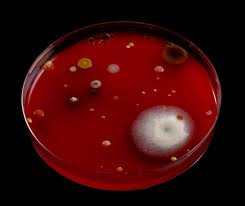Microbes are tiny organisms—too tiny to see without a
microscope, yet they are abundant on Earth. They live everywhere—in air, soil,
rock, and water. Some live happily in searing heat, while others thrive in
freezing cold. Some microbes need oxygen to live, but others do not. These
microscopic organisms are found in plants and animals as well as in the human
body.
Some microbes cause disease in humans, plants, and animals.
Others are essential for a healthy life, and we could not exist without them.
Indeed, the relationship between microbes and humans is delicate and complex.
Most microbes belong to one of four major groups: bacteria,
viruses, fungi, or protozoa. A common word for microbes that cause disease is
"germs." Some people refer to disease-causing microbes as
"bugs." "I've got the flu bug," for example, is a phrase
you may hear during the wintertime to describe an influenza virus infection.
Since the 19th century, we have known microbes cause
infectious diseases. Near the end of the 20th century, researchers began to
learn that microbes also contribute to many chronic diseases and conditions.
Mounting scientific evidence strongly links microbes to some forms of cancer,
coronary artery disease, diabetes, multiple sclerosis, and chronic lung
diseases.



